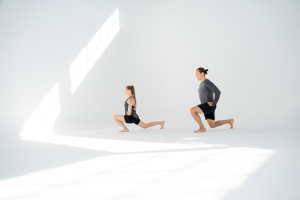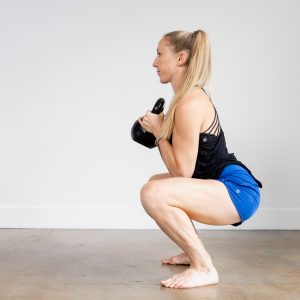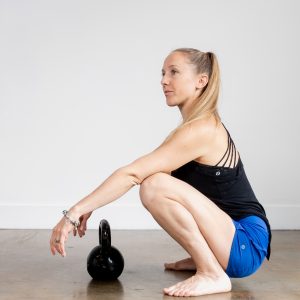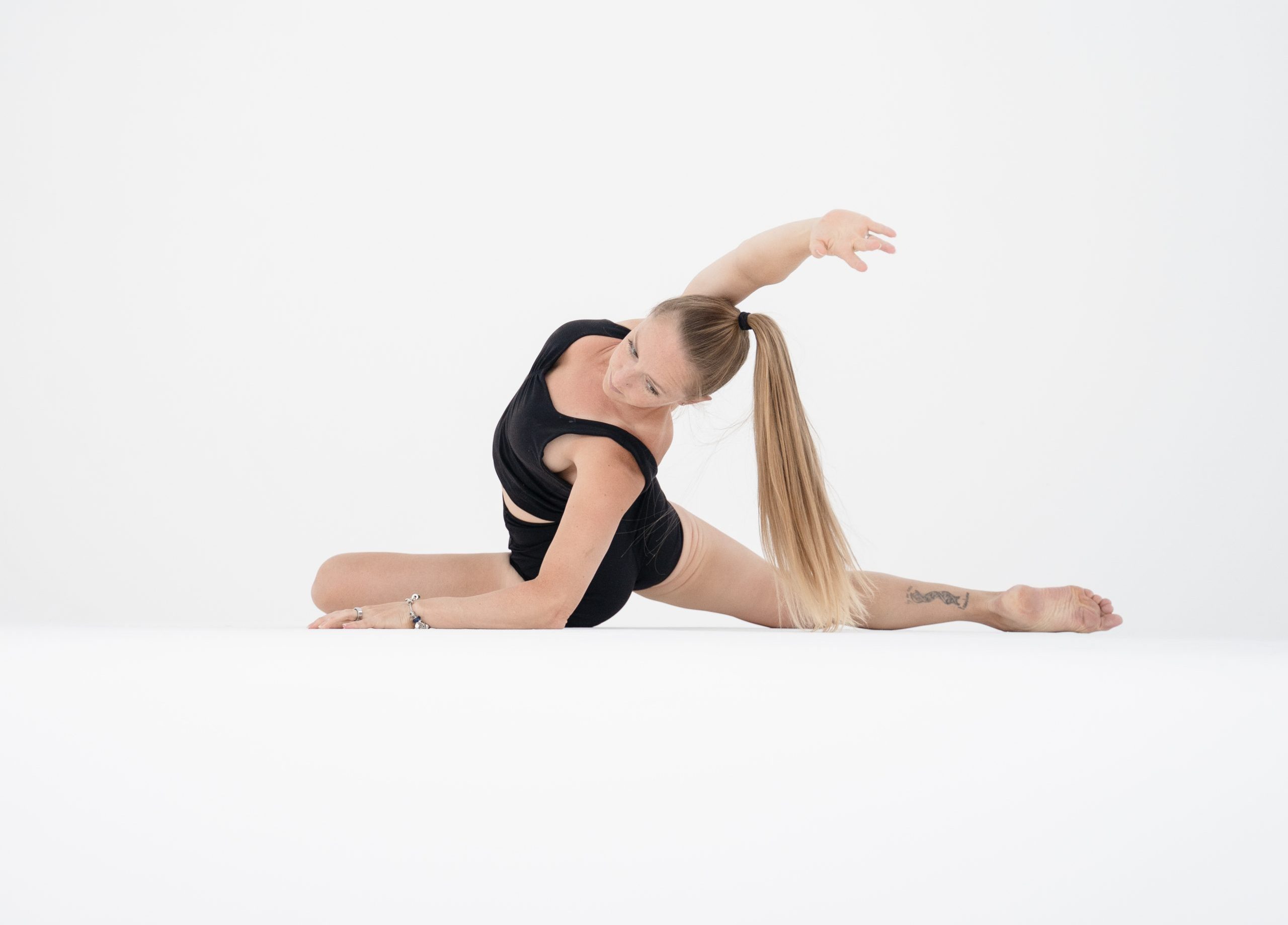When health and movement coach Fréyja Spence is faced with the question, “What exercise choices are safe for a hypermobile body?”, her answer is a resounding “It depends”, as she explains here.
Health and fitness professionals who work directly with clients understand that exercise recommendations are highly individualised. Factors such as a person’s health and injury history, goals, daily demands, movement assessments, and both physical and mental readiness all play a crucial role in determining which exercises are considered safe, whether an individual is hypermobile or not. While guidelines for exercise prescriptions have been established for much of the general population, hypermobility remains less understood. This lack of comprehensive knowledge is partly why misconceptions abound, leaving professionals and individuals uncertain.
Discussing safety in exercise and its nuance hinges on recognising the spectrum within which hypermobility exists. An estimated one in 10 people in the general population are considered hypermobile, largely based on the widely used Beighton Screening Tool1, 2. Systematic reviews have stated that anywhere from 2-57% of the population exhibits hypermobility3. To understand this imprecise range, it is important to know that the score required on the Beighton Screening Tool has changed over time4. Furthermore, much like the BMI screen, the Beighton Screen is not a diagnostic tool. Its aim is only to screen and offer a simple categorisation based on only four joints and forward flexion; this allows it to be conducted quickly and effectively by professionals. Of the one in 10 people with a positive score indicating generalised hypermobility, a subset of approximately 5-10% percent will experience physical and psychological symptoms related to hypermobility. Further, some of these individuals may have a hypermobility syndrome such as the Hypermobility Spectrum Disorders (HSD) or Ehlers-Danlos Syndromes (EDS), which are diagnosed clinically5.
For simplicity, the larger portion of the population presenting with generalised hypermobility are often described as “asymptomatic” and adapt well to their ranges of motion, expressing stability and greater tolerance for a variety of exercise approaches. In contrast, those with “symptomatic” hypermobility may experience greater joint laxity and deficits in stability which contribute to an increased risk of dislocations, subluxations, tissue injuries and pain, particularly when proper recognition and training approaches aren’t applied. Multi-disciplinary care is often needed to help individuals with HSD or EDS manage symptoms that extend beyond their musculoskeletal system to stay active. For a clear illustration of the differences between symptomatic and asymptomatic hypermobility, see a publication figure by Leslie Nicholson et al6. Overall, it is essential to keep in mind that the above terms are intended to explain and describe the umbrella terms around hypermobility but are not predictive of how a person’s health will evolve in time. As our understanding of hypermobility has advanced, exercise has emerged as a crucial component of symptom management. Unlike passive tools (e.g., manual treatment or passive stretching), exercise enhances an individual’s proprioception, improves joint stability, reduces muscle stiffness and ultimately lowers the risk of injury associated with the combined effect of hypermobility and laxity.

Variations in the split squat – working safely with hypermobility
Understanding safe exercise selection relies on knowing how to interpret risk: injuries occur when we’ve imposed a demand greater than what the tissues can withstand. This may mean the motion itself was something the body was not well prepared for, the volume or load was too much or too soon, there was a loss in control (often during moments of acceleration), recovery was insufficient, or poor technique was repeatedly used. Just because a hypermobile joint can reach an end range doesn’t mean it can handle the associated load, pressure or repetitive stress incurred. Training a limited portion of the total range of motion (RoM), as has been previously advised, can leave an individual unprepared to control their full range, increasing risk of harm. In those with symptomatic hypermobility, the inherent laxity in connective tissues necessitates greater muscular effort for all tasks, leading to increased stiffness and fatigue. Risk is heightened both by insufficient demands and by excessive ones.
There are opposing views when it comes to determining safe activity for hypermobile individuals, with some seeing hypermobility as an asset and others as a limitation. Both perspectives can hold validity based on the specific context. Seen as an asset, activities like gymnastics, classical ballet and yoga clearly benefit from hypermobility. Hypermobile hips or shoulders are also advantageous for goal tending in hockey, pitching in baseball, swimming and even weightlifting. Ultimately, not every activity or exercise is necessary or appropriate for everyone, even if there is an inherent RoM advantage. Seen as a limitation, it is tempting to propose that ‘all’ people with hypermobility should engage in only gentle movement modalities, while excluding others for fear of injury. While methods like tai chi and Pilates can be extremely beneficial – improving balance, co-ordination and proprioception – they will not address all the stability, strength or speed demands a person requires for daily life. More importantly, it’s essential to integrate what a person needs with their activity goals and interests. In reality, no single movement approach addresses all our physical needs, so a combined strategy based on guiding principles is most effective.

The squat – loaded

The squat – relaxed
The goal of exercise for hypermobile individuals should be to balance risk with the potential for adaptation: stability, strength, proprioception and co-ordination can all be trained. Avoiding overly restrictive or cautious approaches long term is crucial, as excessive limitations can lead to deconditioning and loss of physical capacity or independence. It was once believed that only gentle, low-volume and low-load exercises were safe for symptomatic hypermobility, but updated evidence has shown that individually prescribed ‘higher’ loads requiring less training time per week were safe, well tolerated and improved function7. Similarly, walking on uneven surfaces was once viewed as risky but the variability provided by hiking on natural terrain can be beneficial for developing balance and joint stability, and the confidence gained can boost motivation. The following simple principles can promote safe exercise selection for a person with symptomatic hypermobility more so than seeking out a single approach:
- Prioritise integrated stability: Focus on movements that engage the whole body with points of contact to enhance balance and co-ordination, and distribute loads.
- Promote slow tempos: Slow movements help individuals better control their range and improve their sense of self in space, reducing injury risk while building stability and strength. Own slow before earning speed.
- Grow control: Begin with smaller ranges of motion where control, breathing and technique are manageable. Gradually increase the range to enhance overall control and stability.
- Start small: Introduce new stimuli with a single set or a shorter session if starting out. For beginners, shorter, more focused sessions can be more effective than longer ones that elicit more fatigue than a person can easily recover from.
- Promote variability: Incorporate a variety of movements and exercise types. Doing two sets of eight different exercises can be more beneficial than four sets of four exercises, reducing the risk of fatigue-related injuries and enhancing overall adaptability.
- Incorporate relaxation techniques: While increasing control and variability helps reduce muscle stiffness long term, relaxation techniques can further improve recovery and reduce fatigue.
- Be flexible: Symptomatic hypermobility can vary day to day and month to month. Adjust exercises based on daily symptoms and fatigue levels to maintain consistency.
- Mimic life: Choose exercises or create movement tasks that have practical relevance to daily activities and personal interests. Enhancing stability and strength for everyday tasks boosts confidence, reduces injury risk and enables participation in a range of activities like outdoor adventures, games and community events that were once inaccessible.
Last but not least, an essential aspect of exercise for hypermobile individuals is creating mental readiness with education and informed confidence rather than instilling fear about their ranges of motion. Fear can adversely affect physical performance in any movement task, potentially leading to increased pain or muscle soreness from training and fostering a negative association with exercise8-10. By avoiding overgeneralisations and balancing risk with the potential for adaptation, individuals with hypermobility can find effective and safe ways to stay active and healthy, and have fun.
Discover more about hypermobility and Ehlers-Danlos syndrome on the FitPro blog
References
- Remvig L, Jensen DV & Ward RC (2007), Are diagnostic criteria for general joint hypermobility and benign joint hypermobility syndrome based on reproducible and valid tests? A review of the literature, Journal of Rheumatology, 34(4): 798-803.
- Tinkle B, Castori M, Berglund B, Cohen H, Grahame R, Kazkaz H & Levy H (2017), Hypermobile Ehlers-Danlos syndrome (a.k.a. Ehlers-Danlos syndrome Type III and Ehlers-Danlos syndrome hypermobility type): Clinical description and natural history, American Journal of Medical Genetics, Part C, Seminars in Medical Genetics, 175(1): 48-69.
- Blajwajs L, Williams J, Timmons W & Sproule J (2023), Hypermobility prevalence, measurements, and outcomes in childhood, adolescence, and emerging adulthood: A systematic review, Rheumatology International, 43(8): 1,423-44. https://doi.org/10.1007/s00296-023-05338-x
- Malek S, Reinhold EJ & Pearce GS (2021), The Beighton Score as a measure of generalised joint hypermobility, Rheumatology International, 41(10): 1707-16. https://link.springer.com/article/10.1007/s00296-021-04832-4
- Ehlers-Danlos Society. (n.d.). EDS diagnostics. Ehlers-Danlos Society. Retrieved August 15, 2024, from https://www.ehlers-danlos.com/eds-diagnostics/#:~:text=The%20path%20to%20an%20EDS,and%20how%20much%20it%20stretches
- Nicholson LL, Simmonds J, Pacey V, De Wandele I, Rombaut L, Williams CM & Chan C (2022), International Perspectives on Joint Hypermobility: A Synthesis of Current Science to Guide Clinical and Research Directions, Journal of Clinical Rheumatology : Practical Reports on Rheumatic & Musculoskeletal Diseases, 28(6): 314-20. https://doi.org/10.1097/RHU.0000000000001864
- Liaghat B, Skou ST, Søndergaard J, Boyle E, Søgaard K & Juul-Kristensen B (2022), Short-term effectiveness of high-load compared with low-load strengthening exercise on self-reported function in patients with hypermobile shoulders: A randomised controlled trial, British Journal of Sports Medicine, 56(22): 1269-76. Advance online publication. https://doi-org. /10.1136/bjsports-2021-105223
- Gatchel RJ, Neblett R, Kishino N & Ray CT (2016), Fear-avoidance beliefs and chronic pain, The Journal of Orthopaedic and Sports Physical Therapy, 46(2): 38-43.
- Bishop MD, Horn ME & George SZ (2011), Exercise-induced Pain Intensity Predicted by Pre-exercise Fear of Pain and Pain Sensitivity, The Clinical Journal of Pain, 27(5): 398-404. https://doi.org/10.1097/AJP.0b013e31820d9bbf
- Celletti C, Castori M, La Torre G & Camerota F (2013), Evaluation of Kinesiophobia and its Correlations with Pain and Fatigue in Joint Hypermobility Syndrome/Ehlers-Danlos Syndrome Hypermobility Type, BioMed Research International, 2013: 580460–580467. https://doi.org/10.1155/2013/580460








